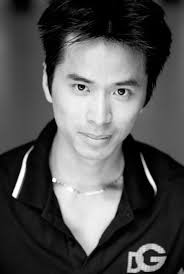 Life & Style
Life & Style

Lê Ngọc Văn is the pride of Vietnamese ballet. He was the first artist to work with the English National Ballet back in 2003, and recently returned to Việt Nam at the invitation of Việt Nam National Opera and Ballet (VNOB).
 |
Lê Ngọc Văn is the pride of Vietnamese ballet. He was the first artist to work with the English National Ballet back in 2003, and recently returned to Việt Nam at the invitation of Việt Nam National Opera and Ballet (VNOB). Văn choreographs two pieces Bolero and Suite en Blanc in his first collaboration with VNOB dancers.
Culture and art events website hanoigrapevine interviews Văn on the occassion of his first time to work with VNOB.
What does your return to Việt Nam mean to you after such a long absence?
I think it is my chance to express my feelings for Vietnamese ballet. I’ve always wanted to return to Việt Nam. I have had chances to return to perform before, but VNOB director Trần Ly Ly, who was my classmate at the Việt Nam Dance College, invited me to work with VNOB. Both Ly and I want to help Vietnamese ballet dancers to improve their skills to an international level.
However, it will require a long process because classic ballet needs high accuracy and patience. You can’t become a superstar overnight. My co-operation with VNOB is the first step to teach more classical techniques to Vietnamese dancers.
Returning and working with VNOB - one of leading theatres in Việt Nam - is an honour. I hope I will have more opportunities in the future to work with VNOB.
You have been away for a long time. Has it been difficult to keep track of the Vietnamese ballet scene?
Not at all. I have performed in Việt Nam with English ballet troupes in Hà Nội and HCM City, which went down well with the audiences and my Vietnamese colleagues. This has encouraged me to follow Vietnamese ballet more.
This co-operation with VNOB is the first step of surely many more steps in the future. I hope the Việt Nam Dancers’ Association and other organizations will help dancers like me to continue to help Vietnamese ballet development.
When you returned to perform in Việt Nam in 2011 you expressed your hope to see Vietnamese ballet develop in the next ten years. Have you seen any progress?
As with many other genres, it take times and hard work including a good mentality and physicality to become a ballet dancer. Frankly, I feel sorry for Vietnamese ballet dancers. They work very hard but they don’t get good payment. It is a pity for the dancers who have to quit their jobs.
There are differences between Vietnamese and European ballet. In London, a ballet dancer is trained to dance. In Việt Nam, a dancer is trained in ballet, folk and contemporary dance. Their bodies have to adapt to the genre and it distracts them from ballet.
I know that Vietnamese ballet dancers have many difficulties such as low salaries, and don’t have much time to practice. Sometimes, they cannot turn up for rehearsal because they’ve performed late the night before. I have great sympathy for them. But to perform full-time, dancers have to be skillful, which takes great efforts.
You have worked on Bolero and Suite en Blance in England and China. What makes the Vietnamese version different?
I’ve had to change some of the moves to suit the dancers. In the countries that have developed ballet the dancers can dance to any movements I create. However in Việt Nam, if I ask the dancers to perform a difficult movement and they are unable to they become discouraged. I don’t want that. I want to encourage them. We have only two weeks to rehearse. It is too short a time.
Why do you combine classic and modern ballet in a show?
I want to show the skills of the dancers and attract more audiences to different genres of dance. Modern ballet lovers also enjoy classic ballet, and vice versa.
The combination is a challenge for me because the two genres are different in many ways such as ideas, technique and music. Performing different dance techniques in a show challenges the dancers, but it is an attractive part of the show. — VNS




